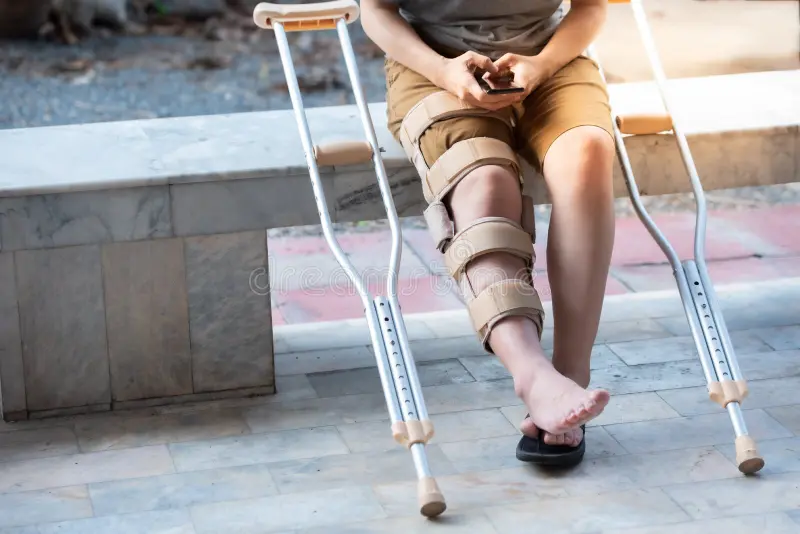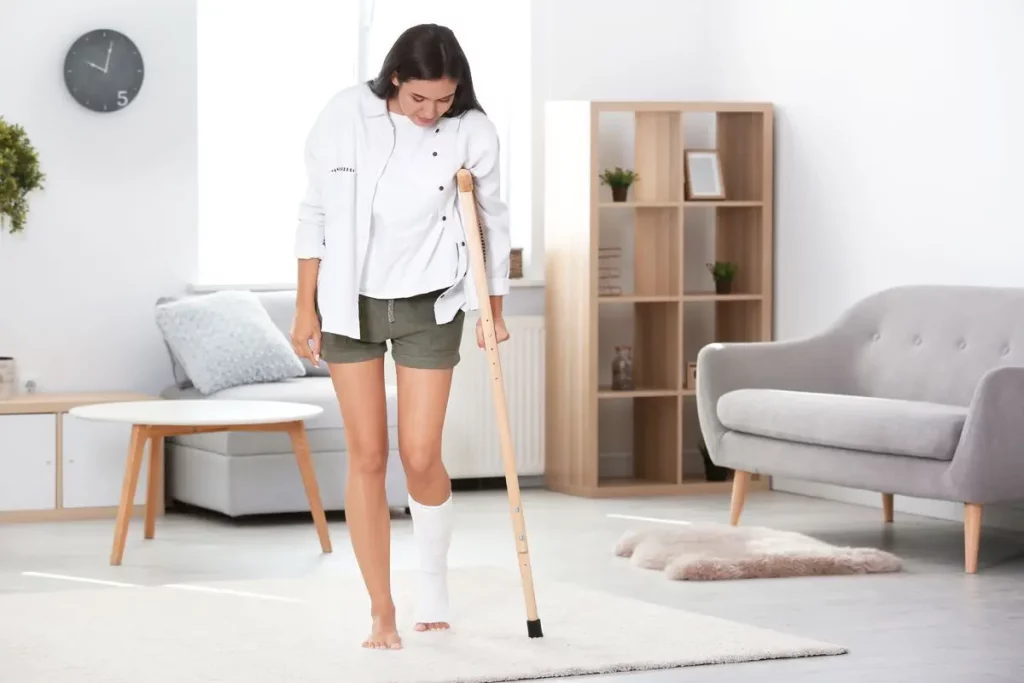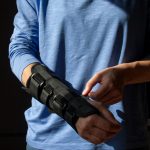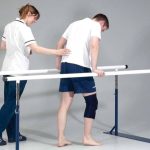If you have suffered a broken bone, also known as a fracture, then you may benefit from the skilled services of a physical therapist. Your physical therapist can help you regain normal range of motion, strength, and functional mobility after a fracture. So what do physical therapy and rehab entail after a fracture?
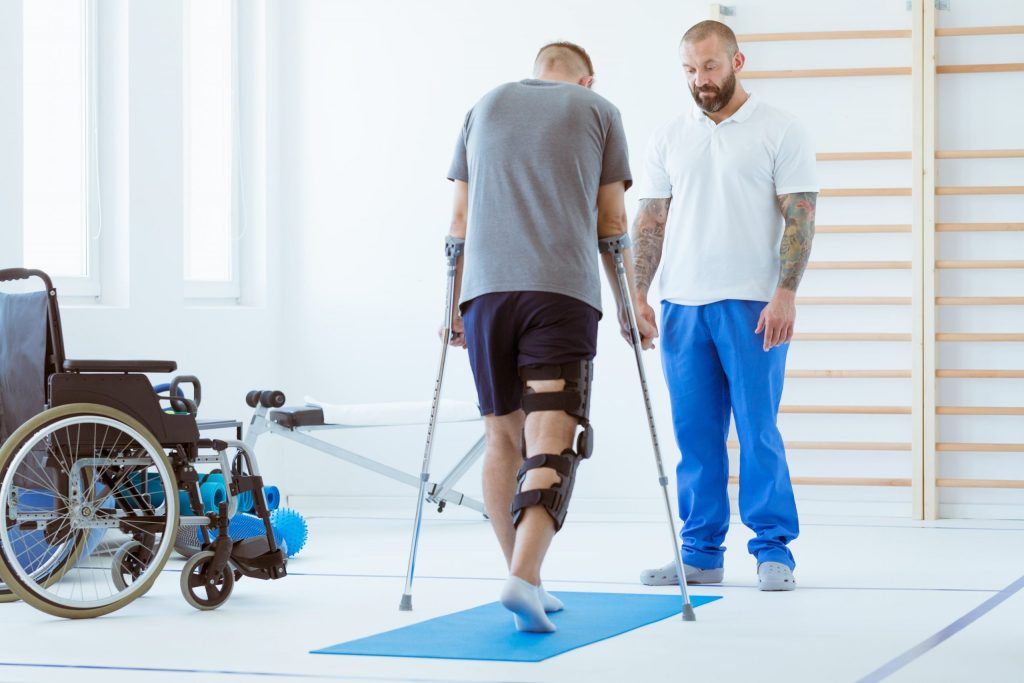
If you have had the unfortunate injury of a fracture or broken bone, then you may understand how painful this can be. A broken bone requires swift medical attention to ensure proper healing and alignment of the bone.
After a fracture, your bone will be set, or reduced, by a healthcare provider. Reduction of the bone can be done manually. For more serious fractures, a surgical procedure called an open reduction internal fixation (ORIF) may be necessary to make sure that all the bone pieces are in the correct place and healing can occur.1
Often after fracture, the bone needs to be stabilized or immobilized to ensure proper healing. This is usually accomplished using a cast. For simple fractures, your healthcare provider may elect to apply a removable cast so that gentle motion can occur around the injury site. After complex fractures or an ORIF procedure, you may be required to wear a cast that is not to be removed. If you fracture your shoulder or arm, you may be required to wear a sling to keep the arm immobilized. Check with your healthcare provider to ensure that you understand what is expected of you in regard to immobilization.2
Starting Physical Therapy after Fracture
After a fracture, physical therapy may be ordered to help ensure you return to optimum function as quickly as possible. You may encounter a physical therapist at different times in the continuum of care after suffering a fracture.
In the Hospital
After you fracture a bone, a physical therapist may visit you in the hospital. If you break your leg or ankle, a physical therapist may instruct you in how to walk with an assistive device, like a cane or crutches. This includes how to use the device to walk up and down stairs or to get into and out of a car. Be sure to ask questions if you have any.3
Learning a new skill takes practice, so be sure to practice using your device while the physical therapist is with you.
After a lower extremity fracture, your healthcare provider may limit the amount of weight you can put on your leg. Your PT can help you understand weight bearing restrictions and can teach you how to move about while still maintaining these restrictions.
If you fracture your arm, you may be required to keep your arm in a sling to help with healing. In the hospital, your physical therapist may teach you how to apply and remove the sling.3
Video: “Rehabilitation after a Hand Fracture”
Upper limb. Set No.1 improvement of mobility and range of joint movement
For additional information about the recovery process after a hand fracture, you can watch a video demonstrating exercises and rehabilitation recommendations.

At Home
When you return home from the hospital after a fracture, your healthcare provider may order physical therapy at home. Home care physical therapy usually is reserved for people who are unable to leave the house as a result of their injury.4
Your physical therapist can help you master using your assistive device in your home environment. You may also engage in exercises to help improve your overall endurance or to strengthen the muscles around the fracture site.
If you break your leg or ankle, your healthcare provider may have specific weight-bearing restrictions that you must follow. Your physical therapist can help you maintain these restrictions to ensure that you do not put too much stress on the healing bone. Lifting restrictions may be in place after an arm or shoulder fracture.3
At your house, your physical therapist can also assess your home environment. He or she can make recommendations to make minor adjustments to allow you to move safely around your home.
If surgery was required to set your fracture, your PT may assess your surgical scar to ensure that things are healing properly.5
Video: “Exercises for the Lower Limb Problems“
Exercises for the pelvic girdle and hip joint. Set No.2 is aimed at strengthening the muscles
For additional information about the sets of exercises for rehabilitation of the pelvic girdle and hip joint, knee joint and ankle joint, you can watch a video demonstrating exercises and rehabilitation recommendations.
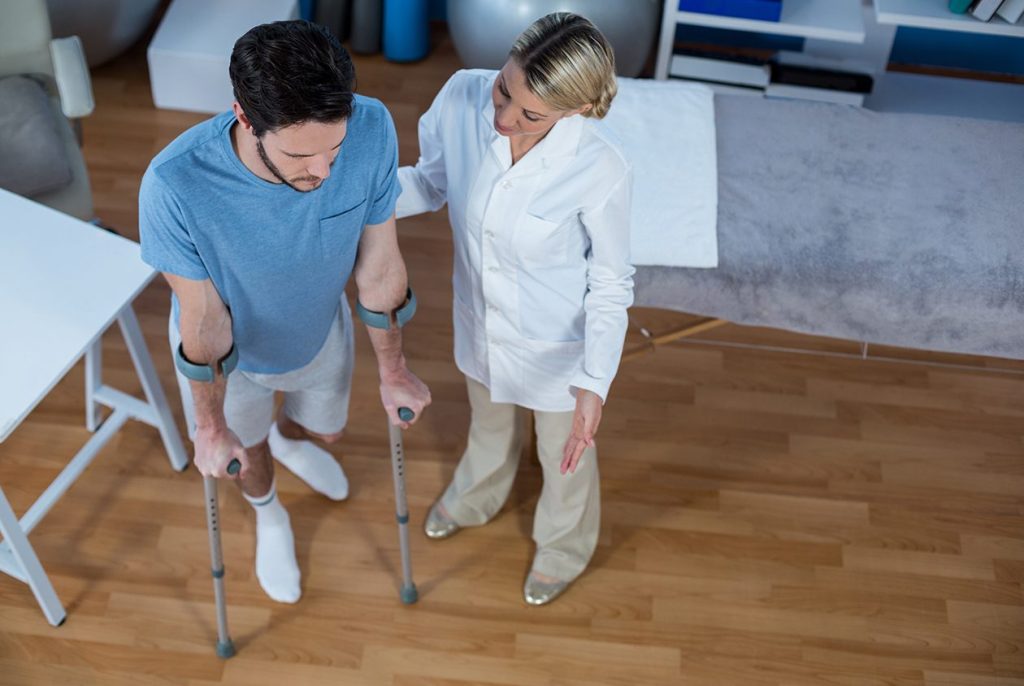
In the Clinic
When you have recovered enough to travel from your home, your healthcare provider may refer you to a physical therapy clinic to help with restoring normal function after your fracture. Usually, this occurs after the cast has been removed and you can start mobilizing the area around the fracture. You may still have to follow weight-bearing precautions or lifting restrictions at this point, so be sure to consult with your healthcare provider so you understand what your limitations are.6
Your first visit with your physical therapist will usually involve an evaluation and assessment. Your therapist will likely take measurements of body parts around the fracture site.
This might include measurements of:
- Range of motion
- Strength
- Pain
- Flexibility
- Girth or swelling
- Gait (for lower extremity fractures)
- Overall function and mobility7
After the initial evaluation, your physical therapist can work with you to devise a treatment strategy to help you recover fully. Physical therapy after a fracture often focuses on overcoming the negative effects of being immobilized by a cast or sling. Immobilization may cause loss of motion and strength and decreased functional mobility.3
Physical therapy after fracture can also help you improve your functional mobility. If you have fractured your leg, your physical therapist can help you improve walking and help decide if you should walk with a walker, crutches, quad cane, or standard cane. If you have fractured an arm or shoulder, functional activities that focus on reaching and grasping may be included.3
Physical agents or modalities may be used to help with pain and swelling. Electrical stimulation may also be used to help improve muscle recruitment. You should remember that while passive treatments like electrical stimulation3 or ultrasound may be used, you should also be engaged in active activities in your physical therapy.
If you have had surgery to reduce the fractured bone, you may have surgical scar tissue. Scar massage and mobilization can help reduce scar adhesions and improve mobility around the scar.5
Exercises to improve range of motion and strength may also be started. Particular focus should be placed on the fractured area and the joints around the fracture. If you broke a bone near your elbow, mobility exercises should be included for your elbow, wrist, and shoulder. Likewise, a fracture of the tibia (shin) should include exercises for the knee, ankle, and hip.3
Exercise can help ensure that your bone can tolerate the loads and stresses that you may encounter during normal everyday function. Speak with your healthcare provider and physical therapist to learn the correct exercises for your specific condition.
How Long Should PT Last?
Everyone’s fracture is different, and everyone heals at different rates. In general, a fracture should be healed by about eight weeks.8 Your rehab timeline will depend on the type of fracture, your age, and other factors. Your physical therapist should be able to give you an idea of how long your rehab program is expected to last.
A Word From Verywell
A fracture can be painful and can lead to significant functional loss and disability. Depending on the severity of the injury, the loss may be temporary or permanent. Working to gain mobility and strength after a fracture should be your main goal after a fracture. Physical therapy can help you return to optimum functional mobility as quickly as possible.
By Brett Sears, PT
Brett Sears, PT, MDT, is a physical therapist with over 20 years of experience in orthopedic and hospital-based therapy.
Sources & References
Verywell Health uses only high-quality sources, including peer-reviewed studies, to support the facts within our articles. Read our editorial process to learn more about how we fact-check and keep our content accurate, reliable, and trustworthy.
- John Hopkins Medicine. Ankle fracture open reduction and internal fixation.
- The Royal Children’s Hospital Melbourne. Fracture education, management principles.
- Paz, JC, West MP. Acute care handbook for physical therapists. New York: Elsevier Health Sciences.
- Latham NK, Harris BA, Bean JF, et al. Effect of a home-based exercise program on functional recovery following rehabilitation after hip fracture: a randomized clinical trial. JAMA. 2014;311(7):700-8. doi:10.1001/jama.2014.469
- DuPage Medical Group. 8 ways to reduce scar formation & increase mobility.
- Lardelli P, Frech-dörfler M, Holland-cunz S, Mayr J. Slow recovery of weight bearing after stabilization of long-bone fractures using elastic stable Intramedullary nails in children. Medicine (Baltimore). 2016;95(11):e2966. doi:10.1097/MD.0000000000002966
- Chinn L, Hertel J. Rehabilitation of ankle and foot injuries in athletes. Clin Sports Med. 2010;29(1):157-67. doi:10.1016/j.csm.2009.09.006
- Cleveland Clinic. How long does it take for a bone fracture to heal?
Additional Reading
- Jung H-Y, Trivedi AN, Grabowski DC, Mor V. Does More Therapy in Skilled Nursing Facilities Lead to Better Outcomes in Patients With Hip Fracture? Physical Therapy. 2015;96(1):81-89. doi:10.2522/ptj.20150090.
- Kisner, C., & Colby, L. A. Therapeutic Exercise: Foundations and Techniques. (3 ed.). Philadelphia: FA Davis.

Check the demo version of GHRS sets of exercises for the Upper Limb Problems on YouTube.
You can find more information about the Upper Limbs Problems in our Library of Articles.
Our website presents sets of exercises for the upper limbs in the following areas:
UPPER LIMB: SET №1 IMPROVEMENT OF MOBILITY AND RANGE OF JOINT MOVEMENT
UPPER LIMB: SET №2 STRENGTHENING THE MUSCLES OF THE SHOULDER COMPLEX AND JOINT STABILIZING. INITIAL STAGE
UPPER LIMB: SET №3 STRENGTHENING THE MUSCLES OF THE SHOULDER COMPLEX AND JOINT STABILIZING. MID STAGE
UPPER LIMB: SET №4 STRENGTHENING THE MUSCLES OF THE SHOULDER COMPLEX AND JOINT STABILIZING. ADVANCED STAGE
UPPER LIMB: SET №5 EXERCISES FOR ELBOW JOINT
UPPER LIMB: SET №6 EXERCISES FOR A WRIST JOINT AND HAND

Check out the demo version of our sets of exercises for the Lower Limb Problems on YouTube
Our website presents the following sets of exercises for rehabilitation of the pelvic girdle and hip joint, knee joint and ankle joint:
-
EXERCISES FOR THE PELVIC GIRDLE AND HIP JOINT. SET №1 IS AIMED AT MUSCLE STRETCHING (IMPROVEMENT OF FLEXIBILITY OF THE MUSCULAR APPARATUS) AND INCREASE OF THE RANGE OF JOINT MOVEMENT
-
EXERCISES FOR THE PELVIC GIRDLE AND HIP JOINT. SET №2 IS AIMED AT STRENGTHENING THE MUSCLES
-
EXERCISES FOR THE KNEE JOINT. SET №3 IS AIMED AT STRETCHING THE MUSCLES (IMPROVING THE FLEXIBILITY OF THE MUSCULAR APPARATUS) AND INCREASING THE RANGE OF JOINT MOVEMENT
-
EXERCISES FOR THE KNEE JOINT. SET 4A IS AIMED AT STRENGTHENING THE MUSCLES. INITIAL STAGE
-
EXERCISES FOR THE KNEE JOINT. SET 4B IS AIMED AT STRENGTHENING THE MUSCLES. MID STAGE
-
EXERCISES FOR THE KNEE JOINT. SET 4C IS AIMED AT STRENGTHENING THE MUSCLES. ADVANCED STAGE
-
EXERCISES FOR THE ANKLE JOINT. SET №5 IS AIMED AT STRETCHING THE MUSCLES (IMPROVEMENT OF FLEXIBILITY OF THE MUSCULAR APPARATUS) AND INCREASE OF THE RANGE OF JOINT MOVEMENT
-
EXERCISES FOR THE ANKLE JOINT. SET №6D IS AIMED AT STRENGTHENING OF THE MUSCLES AND IMPROVEMENT OF PROPRIOCEPTION AND STABILITY OF THE ANKLE AND ENTIRE LOWER LIMB. INITIAL STAGE
-
EXERCISES FOR THE ANKLE JOINT. SET №6E IS AIMED AT STRENGTHENING OF THE MUSCLES AND IMPROVEMENT OF PROPRIOCEPTION AND STABILITY OF THE ANKLE AND ENTIRE LOWER LIMB. MID STAGE
-
EXERCISES FOR THE ANKLE JOINT. SET №6F IS AIMED AT STRENGTHENING OF THE MUSCLES AND IMPROVEMENT OF PROPRIOCEPTION AND STABILITY OF THE ANKLE AND ENTIRE LOWER LIMB. ADVANCED STAGE

